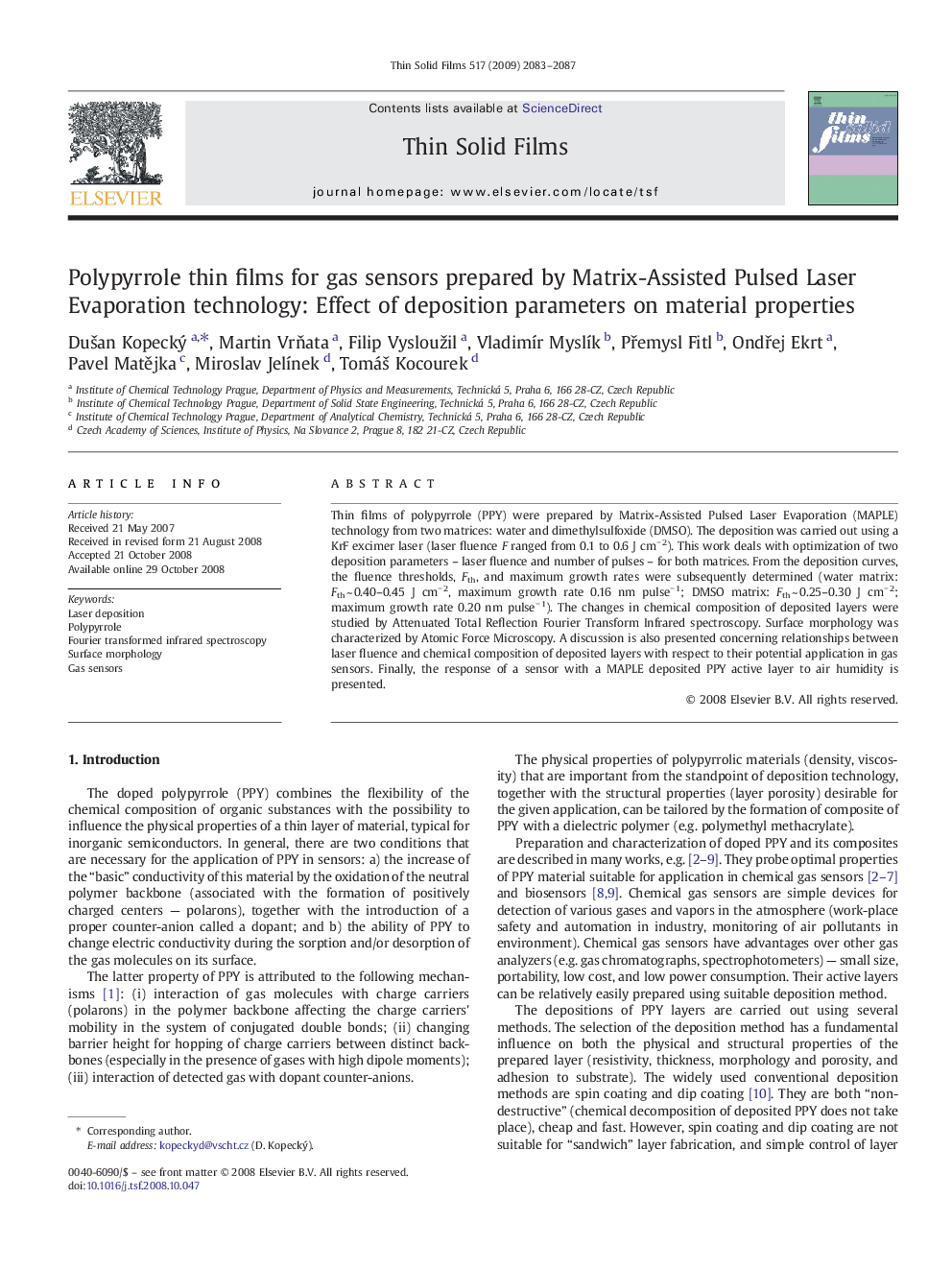| Article ID | Journal | Published Year | Pages | File Type |
|---|---|---|---|---|
| 1672273 | Thin Solid Films | 2009 | 5 Pages |
Thin films of polypyrrole (PPY) were prepared by Matrix-Assisted Pulsed Laser Evaporation (MAPLE) technology from two matrices: water and dimethylsulfoxide (DMSO). The deposition was carried out using a KrF excimer laser (laser fluence F ranged from 0.1 to 0.6 J cm− 2). This work deals with optimization of two deposition parameters – laser fluence and number of pulses – for both matrices. From the deposition curves, the fluence thresholds, Fth, and maximum growth rates were subsequently determined (water matrix: Fth ~ 0.40–0.45 J cm− 2, maximum growth rate 0.16 nm pulse− 1; DMSO matrix: Fth ~ 0.25–0.30 J cm− 2; maximum growth rate 0.20 nm pulse− 1). The changes in chemical composition of deposited layers were studied by Attenuated Total Reflection Fourier Transform Infrared spectroscopy. Surface morphology was characterized by Atomic Force Microscopy. A discussion is also presented concerning relationships between laser fluence and chemical composition of deposited layers with respect to their potential application in gas sensors. Finally, the response of a sensor with a MAPLE deposited PPY active layer to air humidity is presented.
